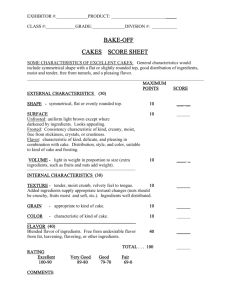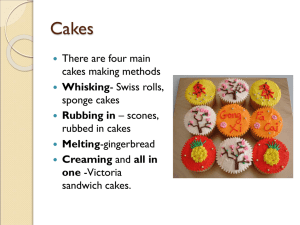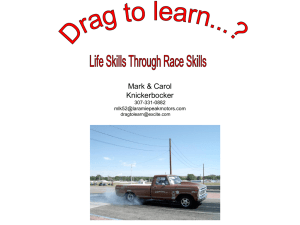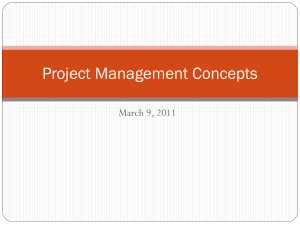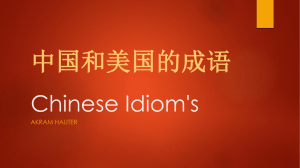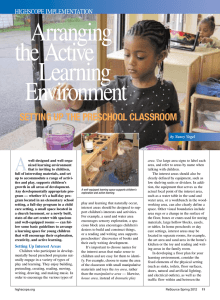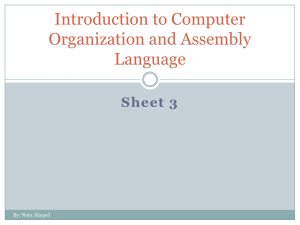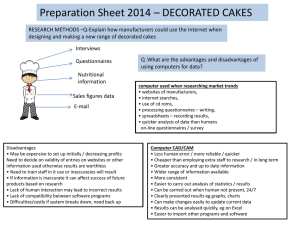HighScope Curriculum: Active Learning & Early Childhood
advertisement
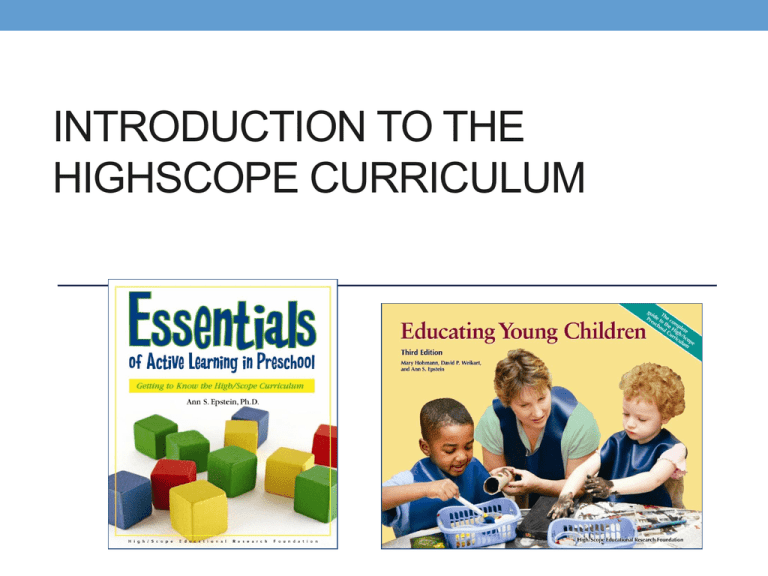
INTRODUCTION TO THE HIGHSCOPE CURRICULUM 2 Objectives 1. Identify the elements of a high quality program 2. Learn the ingredients of active learning 3. Identify the factors of intrinsic motivation 4. Discuss the learning cycle and how it relates to intrinsic motivation 3 Who We Are and What We Do 1. What struck you about the work HighScope does? 2. What was something you did not know about HighScope? 4 HighScope Curriculum • A set of teaching practices for adults • Content for children’s learning in all areas of development • An assessment system to measure program quality and evaluate what children learn • A training model to prepare teachers to use the curriculum 5 Wheel of Learning ASSESSMENT ADULT-CHILD INTERACTIONS ACTIVE LEARNING DAILY ROUTINE LEARNING ENVIRONMENT 6 Elements of Quality • In your table groups create a list of words or phrases that would describe a high quality program. 7 Elements of Quality 1. 2. 3. 4. 5. 6. 7. Child development curriculum Low enrollment limits Staff trained in early childhood development Supervisory support & in-service training Involvement of parents as partners Sensitivity to non-educational needs of children Developmentally appropriate evaluation procedures 8 LEARNING ABOUT APPLES 9 10 CREATE A GROUP DEFINITION FOR ACTIVE LEARNING 11 Ingredients of Active Learning 1. Materials 2. Manipulation 3. Choice 4. Child Language and Thought 5. Adult Scaffolding Create a mnemonic device to help you remember the 5 ingredients of active learning. 12 Looking for Active Learning • Watch the classroom clip Making a School Bus and look for examples of active learning MRS. TURNER’S SMALL-GROUP TIME Hobbies • Turn to a partner and talk about something you like to do and why. 15 Types of Motivation 1. Extrinsic Motivation: Individuals are motivated by the need to receive rewards or punishments to alter their behavior. Drive comes from outside 2. Intrinsic Motivation: Individual’s behavior arises from his or her own needs, not how others will respond. Drive comes from within 16 Intrinsic Motivation • Interest • Enjoyment • Control • Probability of success • Feelings of competence and self-confidence 17 Learning Cycle Play Risk taking Enjoy All is well Repeat Play Mastery 18 My Learning Cycle Knit a scarf Knit a sweater See self as a competent knitter 19 Objectives • Identify and experience different types of play • Recognize characteristics unique to young children’s thinking and reasoning • Apply the horizontal approach to teaching children 20 Spirit of Playfulness 1. What are your fondest memories of play as a child? 2. Which ingredients of active learning were present? 3. Do children today experience the same types of play? Why or why not? 21 Types of Play Constructive Exploratory Pretend Games 22 BUILDING A BRAIN 23 Our Brain 24 Neural Pruning • Connections that are used over and over get stronger and faster. • Connections that are not used, die out. 25 Group Discussion • Based on what we experienced in the yarn activity, what do children need to grow their brains? 26 The Importance of Play in Brain Development Play allows children to: • Explore, create, & develop imagination • Discover their own areas of interest. • Learn how to work together • Build active, healthy bodies and brains. HOW PRESCHOOLERS’ THINKING DIFFERS FROM ADULT THINKING 28 Egocentrism • Young children see the world only from their own view point. • “If I can’t see you, you can’t see me.” • “I would like a doll for my birthday so my mom should want one too.” 29 Animism • If something moves (e.g., water, clothes flapping in the breeze) or if it somehow looks alive (e.g., headlights of a car at night), it must be alive. • “Look, the water is running to get in my shoes.” 30 Concrete Definitions • Words have concrete, literal meanings related to things children have experienced. • When a child hears that his birthday is “just around the corner,” he may want to look around the corner. 31 Judging By Appearances • Children base judgments about number and amount completely on appearances. • Alicia and Monica both took the same size cracker from the basket, but Alicia broke hers into two pieces and Monica broke hers into many smaller pieces. Alicia is upset because Monica has “more crackers.” 32 Focus on Here and Now • Children cannot see the relationship between the way something was and how it’s transformed – sometimes called “slide show thinking.” • A child watches her brother put on a scary mask. The child is then scared of the “monster” because she cannot make a connection between her brother and the “monster.” 33 Blending Intuitive and Scientific Thought • Children incorporate newly-learned scientific information with their own perception. • Melanie’s mother says, “It’s morning.” Melanie replies, “No, it’s still dark, it’s night.” She goes to the window and pulls open the curtain. “Now it’s light. I made it morning.” 34 What Characteristic is This? 35 What Characteristic is This? 36 What Characteristic is This? 37 What Characteristic is This? 38 What Characteristic is This? 39 Thinking and Reasoning in My Classroom • With your table group, share examples of each characteristic you’ve experienced in your classroom CONSTRUCTING KNOWLEDGE 41 Answers 42 Learning a New Task • We have experienced cutting round or rectangular cakes. • We try to cut the cake based on what we already know. • We can’t fit these new rules and this weird cake shape into our existing knowledge about cutting cakes. • We have to change what we know about cutting cakes (learn a new way). 43 Piaget’s Concepts: • Assimilation - trying to fit new input into an existing mental frame-work; resistance to change -- Trying to cut the cake • Disequilibrium - a state of intellectual imbalance; inner conflict (“problem”); provides motivation to find a solution -Can’t cut the cake 44 Piaget’s Concepts cont. • Accommodation - modifying an existing mental framework to accept new input; need for change -- Turn the knife to cut the cake • Equilibrium - a state of intellectual balance; inner contentment; solution of conflict/problem results in new understanding -- New way to cut the cake 45 Approaches to Education Vertical Approach T Horizontal Approach TN N Can’t do Can Do 46 Nora’s Use of Scissors 1. With a partner, read the story about Nora 2. Discuss how you would help Nora master the use of scissors 3. Share ideas with entire group 47 Real life situations like Nora’s 1. With your group, think of a situation that has happened or is happening in your own program similar to Nora. 2. Brainstorm support ideas using the horizontal approach to teaching. 48 THINKING AND REASONING IMPLEMENTATION PLAN
